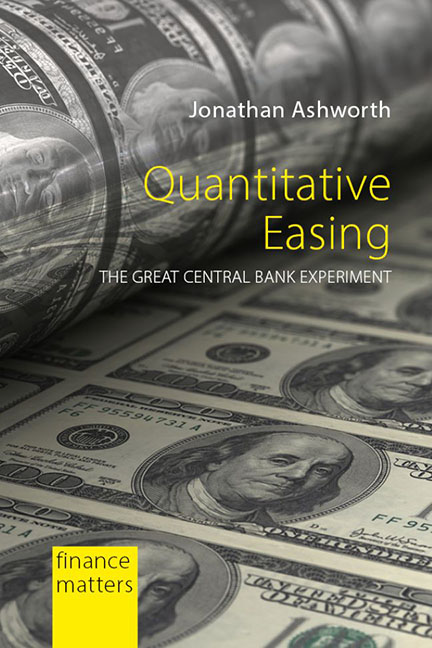Book contents
- Frontmatter
- Contents
- Preface and acknowledgements
- Abbreviations
- Foreword
- 1 Monetary policy-making since the end of Bretton Woods
- 2 Key monetary policy trends and events in the decades before the Great Financial Crisis
- 3 The Great Financial Crisis and the onset of quantitative easing
- 4 How quantitative easing works
- 5 Measuring the effectiveness and impact of quantitative easing
- 6 International spillovers of quantitative easing
- 7 Criticisms and negative externalities of quantitative easing
- 8 Exiting quantitative easing and policies for the next slowdown
- Conclusion
- Notes
- References
- Index
5 - Measuring the effectiveness and impact of quantitative easing
Published online by Cambridge University Press: 20 December 2023
- Frontmatter
- Contents
- Preface and acknowledgements
- Abbreviations
- Foreword
- 1 Monetary policy-making since the end of Bretton Woods
- 2 Key monetary policy trends and events in the decades before the Great Financial Crisis
- 3 The Great Financial Crisis and the onset of quantitative easing
- 4 How quantitative easing works
- 5 Measuring the effectiveness and impact of quantitative easing
- 6 International spillovers of quantitative easing
- 7 Criticisms and negative externalities of quantitative easing
- 8 Exiting quantitative easing and policies for the next slowdown
- Conclusion
- Notes
- References
- Index
Summary
Methods of estimating QE's impact
Since the 1950s, government statistical organizations in the major developed countries have collected quarterly data on key economic statistics such as GDP, household consumption, gross fixed capital formation, government consumption, exports and imports. They have also collected monthly data on other important series such as inflation, industrial production and retail sales. This wealth of historical data, together with the large number of monetary policy easing and tightening cycles, has allowed economists to make reasonably accurate estimates of the likely impact of changes in interest rates on real GDP and inflation and the time frame over which they are likely to occur. Initial estimations used simple statistical methods, but over time, more advanced econometric modelling techniques have been employed (for example, vector autoregressive models (VARs)) and central banks and public policy institutions have increasingly used large macroeconomic models such as general equilibrium and DSGE models. Given that QE had only ever been used before in Japan, there were few historical precedents to inform policy-makers about its probable impact and, in any case, many may have questioned how transferable the findings would be given the many seemingly unique characteristics of the Japanese economy since the bursting of its asset bubbles.
Numerous studies have now attempted to quantify QE's impact on asset prices, GDP growth (and other measures of economic activity) and inflation. The most common are “event study” analyses which attempt to estimate its effect by measuring the impact of central bank QE-related announcements on financial markets over very short time periods, such as the movement in US 10-year government bond yields over one-or two-day windows after important QE-related announcements from the Fed (see, for example, Gagnon et al. 2011; Krishnamurthy& Vissing-Jorgensen 2011; Neely 2011). They then sum up the impact of all the relevant announcements. Table 5.1 based on analysis by Gagnon et al. (2011) provides an example of an event study for US QE1. The studies work on the premise that investors immediately factor into asset prices the news of central bank purchases at the time of announcement rather than in the future when the purchases actually occur.
- Type
- Chapter
- Information
- Quantitative EasingThe Great Central Bank Experiment, pp. 69 - 92Publisher: Agenda PublishingPrint publication year: 2020



